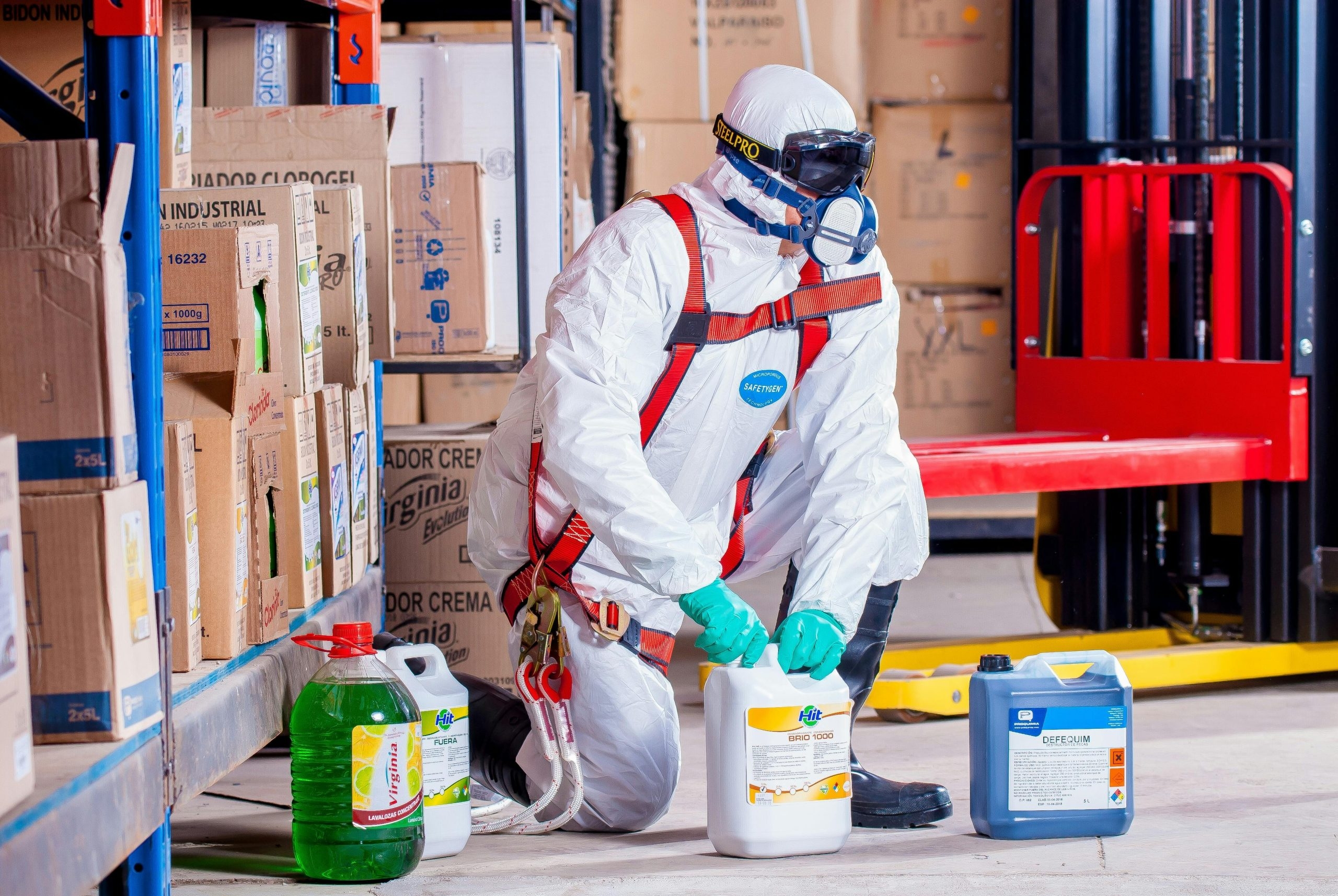Nut allergies are a significant health concern for many individuals, and even minimal exposure to nuts or nut particles can lead to severe allergic reactions, including life-threatening anaphylaxis. This article aims to provide crucial information on creating a health and safety working environment for employees with nut allergies.
Legal Framework for Nut Allergies
While there are no specific laws and regulations addressing nut allergies, certain legislations emphasise an employer's duty to ensure the health and safety of all employees. These include:
- Health and Safety at Work etc. Act 1974: Highlights the employer's responsibility for employee health and safety.
- Management of Health and Safety at Work Regulations 1999: Focuses on conducting risk assessments and implementing preventive measures.
- Equality Act 2010: Recognizes severe or life-threatening allergic conditions as a form of disability.
Nut Allergy Assessment
Once it is noted that an employee has serious allergies, it is necessary to initiate a thorough risk assessment of the workplace to identify potential sources of nut exposure. This assessment should encompass various factors, such as the nature of the work environment, specific tasks performed by employees, the presence of shared spaces, and potential areas where nut allergens may be present (e.g., food preparation areas, vending machines, and communal kitchen spaces).
After completing the general risk assessment, it is needed to conduct individual workplace risk assessments for employees with nut allergies. This step involves gathering specific information about each employee's allergy, including the severity of their reactions and any known triggers. Engaging in open and confidential discussions with the employees allows for the collection of pertinent medical information and a comprehensive understanding of their unique needs.
Preventative Measures in the Workplace for Nut Allergies
Based on the risk assessment findings and individual employee assessments, the employer shall apply appropriate risk control measures to minimise the potential for nut exposure and allergic reactions, such as:
- ‘Nut-free’ zones/policy: Establish designated areas or implement a policy that prohibits/refrains nuts or nut-containing products. This communicates the importance of an allergen-free environment and reduces the risk of accidental exposure.
- Designated Coat Area: Provide a separate area for hanging coats and jackets away from the main workspace to minimize the introduction of allergens, such as dust or pet hair, which may carry nut particles and trigger allergic reactions.
- Hand Hygiene: Encourage regular handwashing with soap and water for all employees to remove potential allergens and reduce cross-contamination. Hand sanitizers alone are not enough.
- Food Labelling and Consumption: Encourage employees to label their food with allergen information, including nuts. This helps individuals with allergies make informed choices and prevents accidental exposure.
- Safe Storage and Catering: Create a designated storage area for employees with food allergies that is separate from areas with allergens. Ensure that safe food options are available for employees with nut allergies and communicate their needs to outside caterers.
- Cleanliness: Maintain a clean workplace by regularly cleaning shared surfaces, equipment, and common areas to remove potential allergens. Implement cleaning protocols that address the needs of employees with nut allergies.
- Consideration of "Hot Desking": Assess whether "hot desking" arrangements pose a risk for employees with food allergies. Consider alternative arrangements to minimise exposure to potential allergens in shared workspaces.
Training and Awareness
It is also important to ensure that all employees are educated about the risks associated with nut allergies, the importance of maintaining a nut-free environment, and how to respond in case of an allergic reaction:
- Regular Training: Conduct regular training sessions to educate staff about nut allergies, including recognising symptoms, the potential severity of reactions, and proper response procedures. Cover topics such as administering first aid, including the use of epinephrine auto-injectors if needed.
- Emergency Response: Ensure all employees know how to respond during an allergic reaction. Designate individuals or a trained team to provide initial assistance until medical professionals arrive.
- Awareness Campaigns: Promote workplace awareness through posters, newsletters, emails, and educational resources. Emphasise the importance of creating a safe environment and considerate behaviour towards those with allergies.
- Understanding Cross-Contamination: Educate staff about the risks of cross-contamination, including the spread of nut particles. Emphasise proper cleaning procedures, separation of allergenic and non-allergenic foods, and the use of dedicated utensils or equipment.
- Food Allergy Bullying: Address the seriousness of food allergy bullying. Educate employees about the potential life-threatening consequences and foster a culture of respect, empathy, and inclusivity. Encourage support and protection of colleagues with allergies.
Emergency Response to Nut Allergies
A comprehensive emergency response procedure, providing access to first aid supplies, can ensure a swift and appropriate response in the event of an allergic reaction:
- Anaphylaxis Management Procedures: Establish clear and concise procedures for managing anaphylaxis, emphasising early recognition and prompt action. Communicate the signs and symptoms of anaphylaxis to all employees to enable swift identification and appropriate response.
- Availability of First Aid: Ensure that first aid supplies are readily available in easily accessible locations throughout the workplace. Train designated staff or a first aid team on the proper use of epinephrine auto-injectors (EpiPen), highlighting the importance of prompt administration during severe allergic reactions.
- Communication of Auto-Injector Locations: Inform all employees about the designated location(s) where staff members with allergies store their adrenaline auto-injectors. This information enables quick retrieval of auto-injectors in case of an emergency.
- Emergency Contact Information: Provide employees with easily accessible emergency contact information, including local emergency services and relevant medical professionals. Clearly communicate the procedure for contacting emergency services and seeking immediate medical help during an allergic reaction.
- Regulation 238 of the Human Medicines Regulations 2012: It is important to mention Regulation 238, which allows adrenaline (epinephrine) to be administered by anyone in an emergency situation to save a life. This regulation empowers individuals to take immediate action when faced with a severe allergic reaction, even if they are not medically trained.
Supporting Employees with Nut Allergies
Fostering a supportive work environment for employees with nut allergies demonstrates a commitment to their well-being and inclusivity. One way to achieve this is by offering alternative food options at company events, meetings, and gatherings to accommodate employees with nut allergies. Collaborate with catering services or food providers to ensure that allergic employees have suitable options available to them. Additionally, establish a clear process for employees to report their nut allergies and request accommodations. This process should encourage open communication and provide a mechanism for employees to express their needs confidentially. It is important to work with employees on an individual basis to determine appropriate accommodations for their specific needs, taking into account their preferences and medical requirements.
Reporting and Record Keeping
It is important to report and record allergic reactions, near misses, or any other incidents related to nut allergies in order to prevent repeated incident. Based on the findings of the incident investigation, establish appropriate corrective and preventive measures.
Policy Review and Update
Regular policy review is essential to stay informed about the latest information and developments in managing nut allergies. Stay updated by monitoring reputable sources such as medical organizations, government health agencies, and allergy advocacy groups. This ensures that nut allergy policies align with current knowledge and recommendations.
In addition, reviewing and updating policies is crucial to comply with relevant laws and regulations regarding accommodations for individuals with allergies. Stay aware of any changes or updates in legal requirements to ensure all policies remain in compliance.
Communication of Policy
Effective communication of the nut allergy policy is crucial to ensure that all employees are informed about its existence, understand its provisions, and are aware of their responsibilities. However, it is important to prioritise the privacy of employees with nut allergies.
Respect the confidentiality of employees with nut allergies and obtain their explicit permission before disclosing any personal information about their allergies to other employees. Allow individuals to have control over who is informed about their condition and how that information is shared. This empowers them to make decisions regarding the disclosure of their allergies.
When sharing information about allergies, maintain confidentiality and ensure that it is done in a respectful and discreet manner. Avoid sharing unnecessary details and limit the disclosure to individuals who genuinely need to be informed, such as supervisors, designated first aid personnel, or close colleagues.






